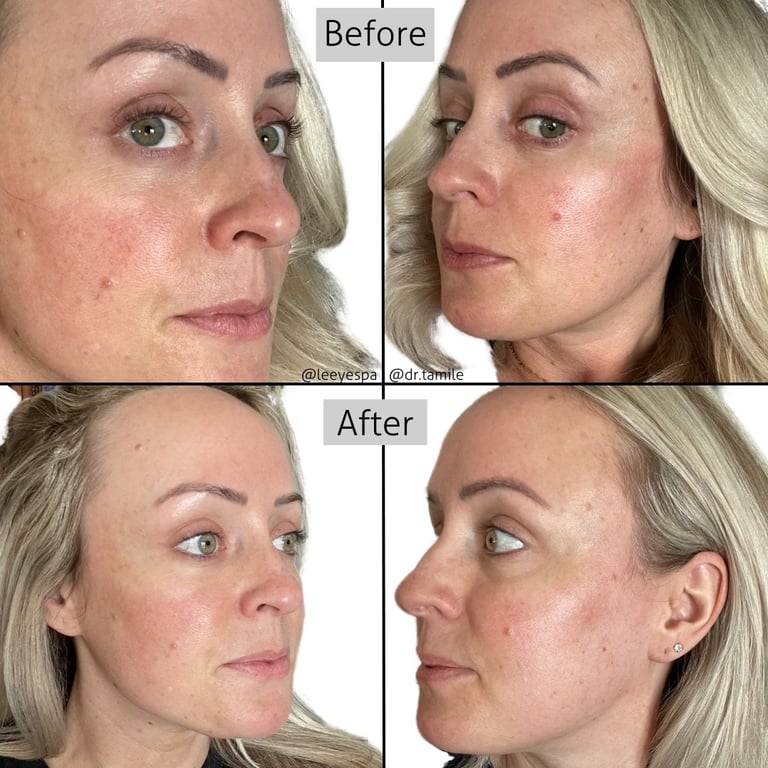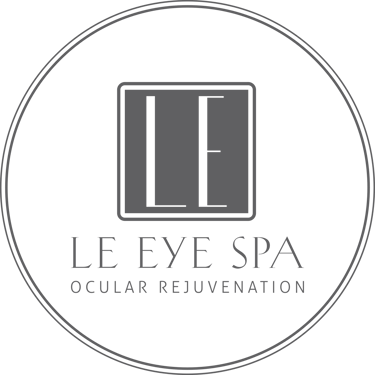Ocular Rosacea: Treatment with IPL and LLLT
If you have rosacea, chances are high that you may also have OCULAR rosacea and meibomian gland dysfunction (MGD).
8/22/20243 min read


What is Ocular Rosacea?
Ocular rosacea is a subtype of rosacea that affects the eyes and the surrounding tissues. It is characterized by inflammation and irritation of the ocular surface, leading to a range of uncomfortable symptoms. Unlike facial rosacea, which tends to manifest as redness and visible blood vessels on the skin, ocular rosacea primarily affects the eyes and the eyelid margins.
Symptoms of Ocular Rosacea
The symptoms of ocular rosacea can vary widely but typically include:
Red, Dry, or Itchy Eyes: One of the most common complaints is persistent dryness and itching.
Burning Sensation: Many individuals experience a burning or stinging sensation in their eyes.
Excessive Tearing: Paradoxically, ocular rosacea can also cause watery eyes.
Sensitivity to Light: Light sensitivity or discomfort in bright environments is common.
Eyelid Irritation: Inflammation of the eyelid margins (blepharitis) can occur.
Foreign Body Sensation: Some people feel as though there is something stuck in their eye.
The Connection with Meibomian Gland Dysfunction
A significant aspect of ocular rosacea is its relationship with meibomian gland dysfunction (MGD). The meibomian glands are responsible for producing the lipid layer of the tear film, which prevents tears from evaporating too quickly. When these glands become blocked or inflamed, they can lead to MGD, resulting in dry, irritated eyes—symptoms that overlap significantly with those of ocular rosacea.
MGD exacerbates the symptoms of ocular rosacea by impairing the quality and stability of the tear film, making it harder for the eyes to stay moist and comfortable. This interplay creates a cycle of irritation and inflammation that can be challenging to manage.
Treatment Options for Ocular Rosacea
Managing ocular rosacea effectively often requires a multi-faceted approach. Two promising treatments that have gained attention are Intense Pulsed Light (IPL) therapy and Low-Level Light Therapy (LLLT).
1. Intense Pulsed Light (IPL) Therapy
IPL therapy is a non-invasive treatment that uses broad-spectrum light to target and reduce inflammation in the affected areas. For ocular rosacea, IPL can help by:
Reducing Inflammation: IPL can target the blood vessels contributing to ocular inflammation, reducing redness and irritation.
Improving Meibomian Gland Function: By treating the inflammation around the eyelids, IPL can enhance meibomian gland function, helping to restore the lipid layer of the tear film.
The treatment involves applying pulses of light to the skin around the eyes, which can help alleviate symptoms and improve overall eye comfort.
2. Low-Level Light Therapy (LLLT)
Low-Level Light Therapy, also known as photobiomodulation, uses specific wavelengths of light to promote healing and reduce inflammation. For ocular rosacea, LLLT can:
Enhance Cellular Repair: LLLT promotes cellular regeneration and reduces inflammation in the ocular surface.
Support Tear Production: By improving overall eye health, LLLT can indirectly support the function of the meibomian glands and improve tear production.
LLLT is generally well-tolerated and can be used in conjunction with other therapies to manage ocular rosacea effectively.
Conclusion
Ocular rosacea is a complex condition that significantly affects the eyes and can lead to considerable discomfort. Its close association with meibomian gland dysfunction highlights the need for comprehensive treatment strategies. Advances in therapies such as Intense Pulsed Light and Low-Level Light Therapy offer promising options for alleviating symptoms and improving eye health.
If you suspect you have ocular rosacea or are struggling with symptoms, it's essential to consult with a healthcare provider who can offer a tailored treatment plan. With the right approach, it is possible to manage this condition effectively and enhance your quality of life.
Understanding Ocular Rosacea: Symptoms, Connection with Meibomian Gland Dysfunction, and Treatment Options
Ocular rosacea is an often-overlooked condition that can significantly impact your quality of life. This chronic eye condition is closely linked with rosacea, a common skin disorder that primarily affects the face. While many are familiar with the facial symptoms of rosacea—such as redness, flushing, and visible blood vessels—ocular rosacea presents its own set of challenges. Let's explore the symptoms of ocular rosacea, its strong connection to meibomian gland dysfunction, and current treatment options, including Intense Pulsed Light (IPL) therapy and Low-Level Light Therapy (LLLT or "red light therapy").
Patient with ocular rosacea treated with IPL and LLLT. Improved dry eye symptoms, reduction of red blood vessels resulting in a white & brighter appearance
Las Vegas Ocular Rosacea Treatment with IPL
Follow us
Subscribe to our newsletter
Hours
Appointment Only | Monday - Friday
Contact
9260 West Sunset Rd Ste 209, Las Vegas, NV 89148
Text or call: (702) 518-2711* | Fax: 888-830-5518
Email: info@leeyespa.com
*For fastest response times, please text or email


